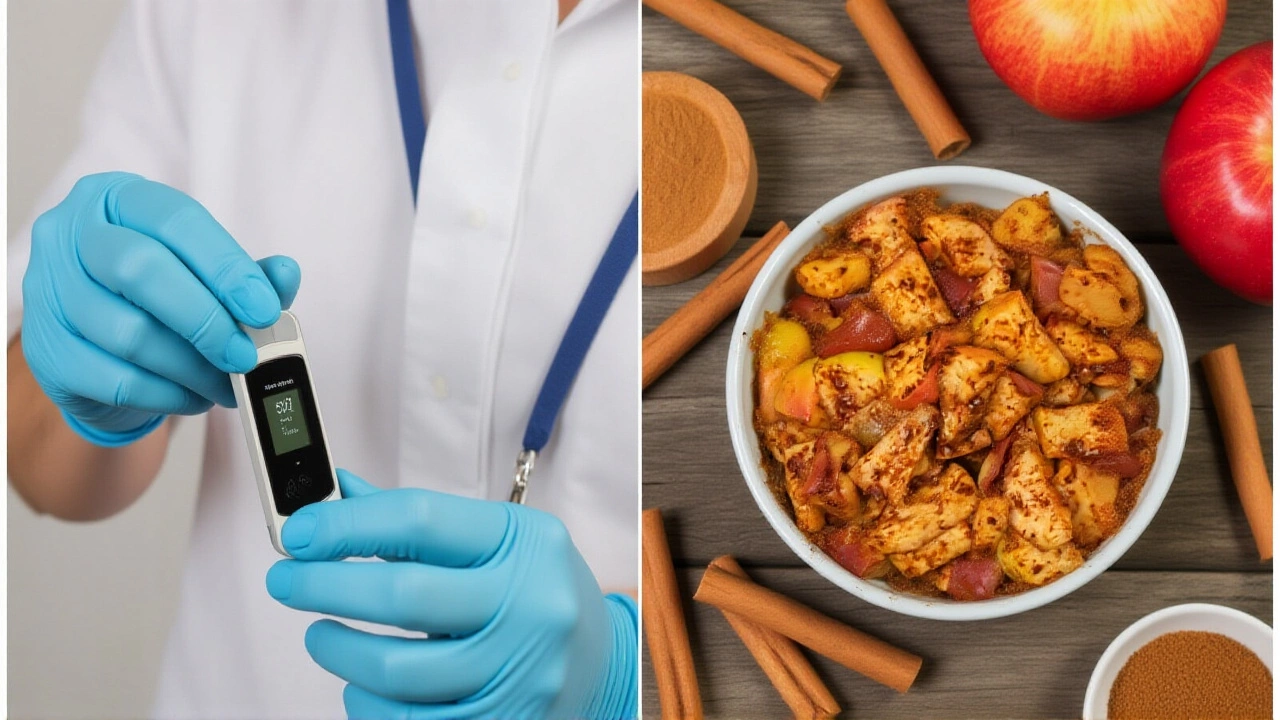Diabetes – What It Is, How It Works, and How to Manage It
When talking about Diabetes, a chronic condition where the body struggles to keep blood sugar levels stable. Also known as high blood sugar disease, it affects millions worldwide and touches every part of daily life. Understanding the basics helps you spot risks early and take control. Insulin, the hormone that moves sugar from the bloodstream into cells plays a starring role, while blood glucose, the main form of sugar circulating in the blood is the metric doctors watch. Two major forms dominate the conversation: type 2 diabetes, the lifestyle‑linked version that develops over years and the less common type 1 diabetes, an autoimmune attack on insulin‑producing cells. The way you eat, move, and medication you take all tie back to these core entities.
Managing diabetes isn’t a one‑size‑fits‑all checklist. First, you need to know that diabetes encompasses blood‑sugar regulation, meaning any factor that nudges glucose up or down matters. Diet influences blood sugar levels, so learning which carbs spike it fast and which release energy slowly forms the backbone of daily choices. Exercise adds a second lever – muscles use glucose during activity, which can lower readings without medication. For many, insulin therapy is the third pillar, delivering the hormone the body can’t produce enough of or can’t use effectively. Finally, regular monitoring creates a feedback loop, letting you adjust food, activity, or meds in real time.
Key Players in Diabetes Care
Let’s break down the main players you’ll encounter. Insulin, often administered through injections or pumps, mimics the natural hormone and helps cells absorb glucose. Different types – rapid‑acting, short‑acting, intermediate, and long‑acting – target various peaks in blood sugar after meals. Blood glucose monitors, devices that give you a numerical snapshot of your current sugar level are the everyday tools that let you see the impact of a snack or a walk. Carbohydrate counting, a method that tracks how many carbs you eat to match insulin doses bridges nutrition and medication. And don’t forget continuous glucose monitors (CGM), sensors that track sugar trends throughout the day, which many users say feels like having a personal health coach on your wrist.
These tools and concepts intersect in everyday decisions. For example, a meal high in simple sugars will cause a rapid rise in blood glucose, prompting a quick‑acting insulin dose. A balanced plate with fiber, protein, and complex carbs will raise sugar more slowly, often needing less insulin. Physical activity after eating can also pull glucose into muscles, reducing the need for extra medication. The goal is to keep blood sugar within a target range – usually 70‑130 mg/dL before meals – without swinging too low, which can cause hypoglycemia.
Complications are the downside of untreated or poorly managed diabetes. Persistent high blood sugar can damage blood vessels, leading to heart disease, kidney failure, vision loss, and nerve pain. That’s why early detection and consistent control matter. Screening tests like fasting glucose, HbA1c, and oral glucose tolerance tests help spot the condition before symptoms appear. If you’re diagnosed, a structured plan that blends diet, exercise, medication, and monitoring can dramatically cut the risk of long‑term damage.
Many people wonder whether they can reverse diabetes. While type 1 is irreversible because the body’s insulin factories are destroyed, type 2 can improve dramatically with lifestyle changes. Weight loss, a low‑carb or Mediterranean‑style diet, and regular movement have helped some individuals lower their HbA1c into the non‑diabetic range, sometimes eliminating the need for medication. However, “reversal” doesn’t mean the disease is gone – the underlying susceptibility remains, so ongoing vigilance is essential.
Technology is reshaping how we handle diabetes. Mobile apps now sync with glucose meters and CGMs, offering trend analysis, alerts, and even AI‑driven dose recommendations. Telehealth visits let you discuss data with a specialist without traveling to a clinic. These advances make it easier to stay on top of numbers and adjust treatment quickly.
If you’re new to the condition, the first steps can feel overwhelming. Start by learning how to read food labels for carbohydrate content, set a routine for checking blood glucose, and discuss insulin options with your doctor. Small, consistent actions – a morning walk, a balanced breakfast, logging meals – build habits that protect you over years. Remember, diabetes care is a marathon, not a sprint. The more you understand the core entities – insulin, blood glucose, diet, and exercise – the better you can steer the outcome.
Below you’ll find a curated set of articles that dive deeper into each of these topics. Whether you’re looking for practical meal‑planning tips, the latest on insulin delivery systems, or ways to interpret CGM data, the collection offers clear, actionable information to help you stay ahead of the curve.
Dietitian Shweta Panchal tells diabetics to skip roti‑rice combo
Dietitian Shweta Panchal advises diabetics to avoid eating roti and rice together, recommending fiber‑rich alternatives and simple meal tricks to keep blood sugar stable.
learn more